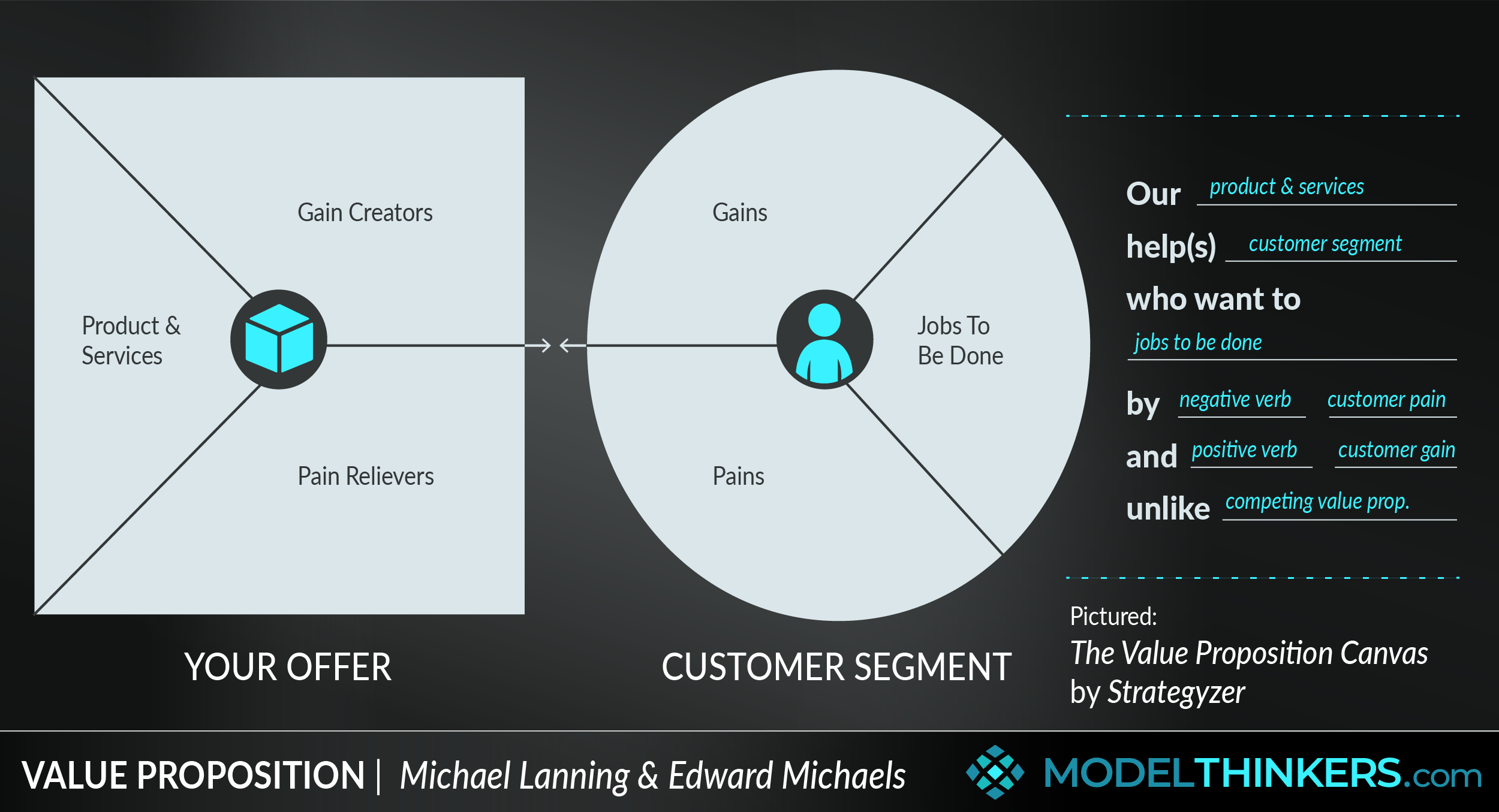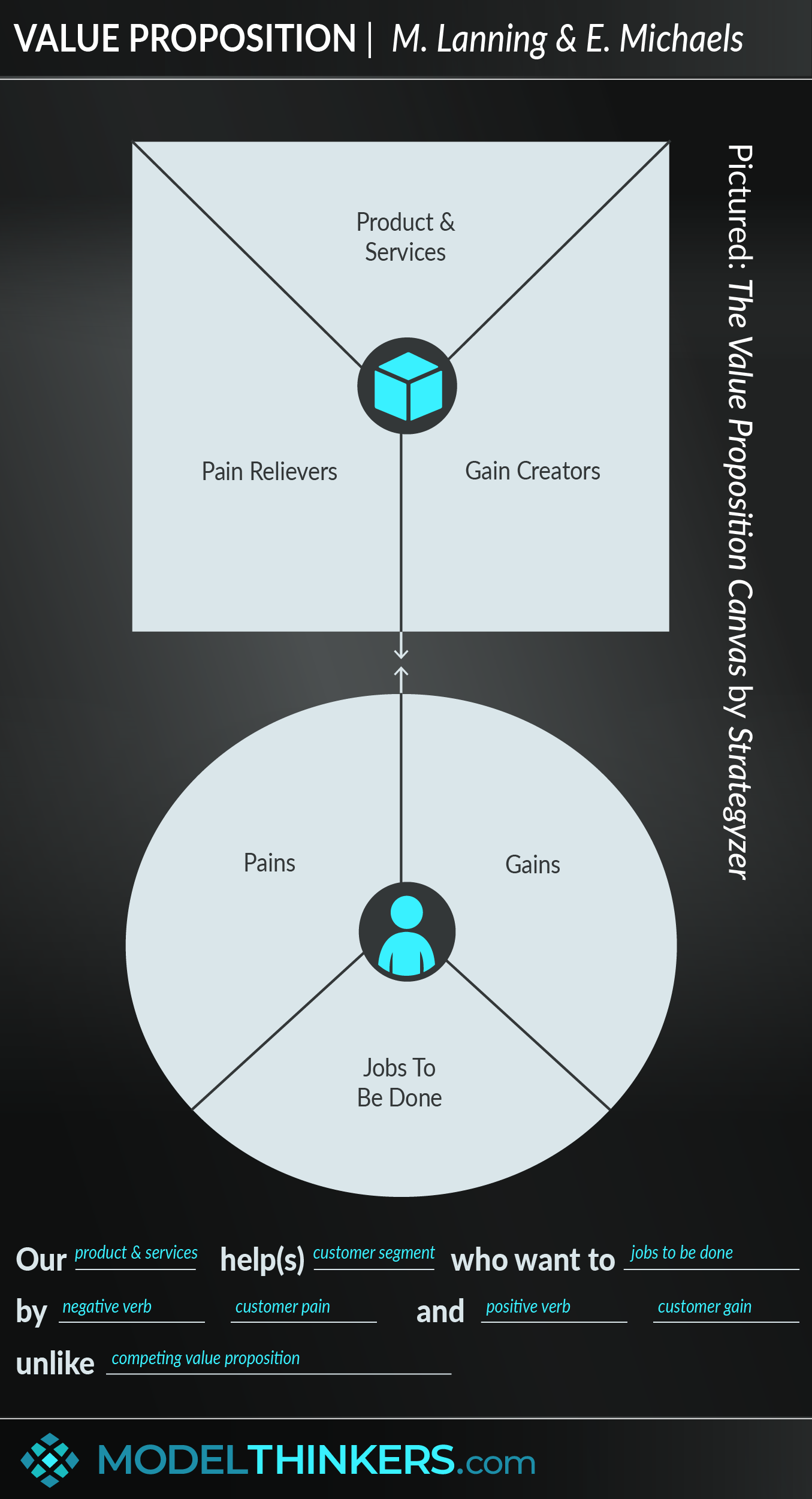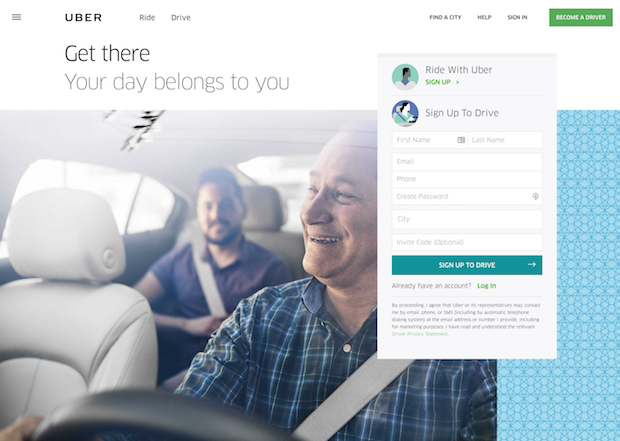

 0 saved
0 saved
 29.8K views
29.8K views








What’s your business or product’s reason for being? And can you succinctly explain why your offer is valuable to your customer? If so, then you might be on your way towards capturing your Value Proposition.
Your Value Proposition is a positioning statement that summarises your promise of value to a potential customer and why they should buy from you as a result.
DEFINING VALUE.
Your Value Proposition doesn’t have to be complicated, nor is there a single correct way to express it. For example, serial entrepreneur Steve Blank suggests using a simple statement of:
We help (X) do (y) by doing (z).
Using this approach we could describe Twitter’s Value Proposition as: ‘We help people to stay connected with global communities by quickly sharing and exploring short messages.’
Sticking to the simplicity theme, product designer Viktor Golias suggests the following ‘formula’:
Value Proposition = [Action 1] + [Action 2] -> [Benefit]
Applying that to Twitter might get you: ‘Start a conversation + Explore your interests -> Be in the know’.
Another approach inspired by Dan and Chip Heath leverages established approaches in new contexts. So the template here is:
[Prove industry example] for/of [new domain]
Using this approach for Twitter might be ‘Facebook for busy people’. Other examples for fictional companies might be ‘Netflix for marketers’, ‘Youtube for job hunting’ etc..
Meanwhile, a Harvard University model frames your Value Proposition as identifying the customers you are targeting; the needs are you meeting; and the price you are delivering. And you might want to take another look at Simon Sinek’s Golden Circle, with its ‘why/ what/ how' questions, which can be used as a value-driven form of your Value Proposition. See the In Practice section below for some examples.
UNIQUE SELLING PROPOSITION.
A Value Proposition often touches upon the point of differentiation with competitors but it also considers the broader value being delivered. This has some overlap with the Unique Value Proposition aka Unique Selling Proposition model, which specifically focuses on that point of difference as the key point of value.
For example, when M&Ms created a patented hard sugar coating for their chocolate, they used the Unique Value Proposition: ‘Melts in your mouth, not in your hands.’ They didn’t bother communicating the broader Value Proposition for chocolate, they were more concerned with talking to a potential chocolate buyer and making a pitch, targeting a perceived pain point, to contrast their offer with their competitors.
THE VALUE PROPOSITION CANVAS.
The Value Proposition Canvas, captured in the image at the top of this page, was created by Alex Osterwalder from Strategyzer and has become a popular tool when developing a Value Proposition. It aligns with Strategyzer’s Business Model Canvas, which explores broader business viability.
The key elements of this canvas include:
-
Customer segment. Fill this section out first based on an analysis of your target audience. The sections include:
-
Jobs to be done. This captures what your customers want to achieve and, according to Osterwalder, might include functional jobs and basic tasks that customers want to do, like getting healthy or buying groceries; or Social Jobs that are about impressing others, such as looking good or being able to deliver a great presentation.
-
Customer pain. This describes the blockers, friction or constraints preventing your customer from achieving their desired jobs and goals. These might include unwanted outcomes which don’t deliver as expected or just things that make achieving the goal harder such as expense, risk, or inconvenience.
-
Customer expected gain. This describes what the customer wants which might include required, expected or desired gains related to the relative level of expectations of your customer.
-
-
Product or service. Fill this section after you have established your customer segment jobs, pains and gains. It includes:
-
The product or service description. You might want to consider the physical component, the intangible component, and the digital component of your offer.
-
Pain relievers. Ask questions like ‘how can I save customers time and money?’ For socially motivated jobs ask, ‘how can I help customers to be seen more positively by others?’
-
Gain creators. Consider how your offer delivers on your customer's expected and desired gains. And how you might exceed those expectations.
-
IN YOUR LATTICEWORK.
Whether you use the canvas or any of the approaches we've outlined above, a Value Proposition is a powerful model for enabling strategic alignment, driving customer-centric product innovation, and targeted marketing. It's also a versatile model that has many strong connections in your Latticework, here are a few of them.
There are clear links to sales based models such as Features vs Benefits and the 4Ps of Marketing. The customer segment exploration makes direct links to Jobs to be Done and, to a lesser extent depending on the nature of your implementation, to Personas. You might also use empathy-based approaches such as Design Thinking, including using Prototypes, to more deeply understand your customers.
The identification of what is important to your customers might be assisted by connecting this approach to the Kano Model, to identify what needs to be invested in to meet basic expectations versus delighting customers; or, via a more simplistic approach, using something like the MoSCoW Method.
When weighing up targeting pains versus gains, you might want to consider Loss Aversion to understand their disproportionate impact; and Hyperbolic Discounting on the need to deliver quick results.




-
Be empathetic and curious about your customers.
Ask questions such as:
-
What are they wanting to achieve?
-
What do they care about?
-
What are their main challenges?
-
What risks do they fear?
-
How do they measure success and failure?
-
What would make their lives and/or work easier?
-
Prioritise and focus.
Aim to outperform your competitors in at least one dimension that matters. Be able to answer the question, ‘what’s different about what you have to offer?’
-
Focus on your strengths and points of difference.
Extending the previous point, commit to building on what makes you strong and what makes you unique, while delivering value to your customers.
-
Use language that resonates.
Your language should be customer-centric, describing value from their perspective in ways that mean something to them. That includes avoiding hype and jargon.
-
Keep iterating.
Ensure that you apply the canvas as a living guide rather than a locked goal. This involves establishing Feedback Loops to constantly update your Value Proposition as you learn more about your customers by engaging with them and analysing data about how they are reacting to your offer.
-
Focus on Benefits over Features.
Dig deeper into the Features vs Benefits mental model, but the point is to describe everything from your customer’s perspective.
-
Consider added value.
The addition of simple terms can help to address common pain/ gain points. They include options such as ‘free shipping’, ‘no setup costs’, ‘no hidden costs’, ‘ongoing support’ etc..
The Value Proposition model is a broad term, with a range of approaches available to you. Some swear by its use as a simple slogan, others will go to great lengths to dismiss this as simple marketing and point to more complex Value Propositions.
So, the main limitation of this model is the lack of consistency in how it is defined and how to develop your own Value Proposition as a result.
We suggest that you explore all of the options we've outlined as you find what works best for your context.
Uber - 'Get there - your day belongs to you'.

This Value Proposition from Uber focuses on convenience and speed. It's a statement about helping customers with their Jobs to be Done and demonstrating a clear benefit – of getting time back in your day.
Airbnb - homes and experiences.
This demonstrates how a Value Proposition can be woven into a Call to Action. The focus on homes and experiences might reflect a pitch to two distinct customer segments in one sentence.
Dollar Shave Club - A great shave for a few bucks a month.

Using the language of the target audience, the Dollar Shavers Club captured a clear Job to be Done and raised their point of differentiation — price.
k
The term 'Value Proposition' was first credited to Michael Lanning and Edwards Michaels in 1988, published in a report for McKinsey. Their definition was: "A clear, simple statement of the benefits, both tangible and intangible, that the company will provide, along with the approximate price it will charge each customer segment for those benefits."
The various approaches covered in the Overview of this model include:
- Steve Blank's simple approach to a VP template;
- Viktor Golias ‘formula’;
- the Heath Brothers' approach as described in Made to Stick.
- And the Harvard Value Proposition model.
And the Value Proposition Canvas covered in the Overview and represented in the image at the top of this page was created by Alex Osterwalder from Strategyzer. View Osterwalder's related book on Value Proposition Design here.
 My Notes
My Notes
Oops, That’s Members’ Only!
Fortunately, it only costs US$5/month to Join ModelThinkers and access everything so that you can rapidly discover, learn, and apply the world’s most powerful ideas.
ModelThinkers membership at a glance:






“Yeah, we hate pop ups too. But we wanted to let you know that, with ModelThinkers, we’re making it easier for you to adapt, innovate and create value. We hope you’ll join us and the growing community of ModelThinkers today.”


































































































